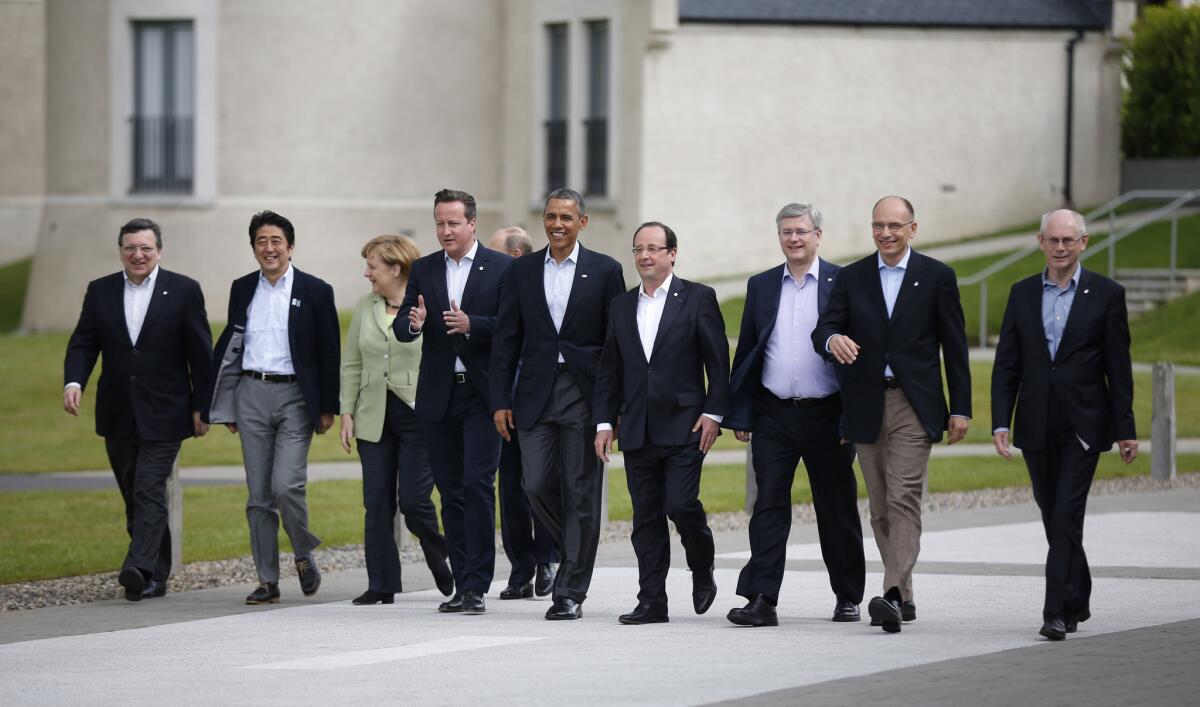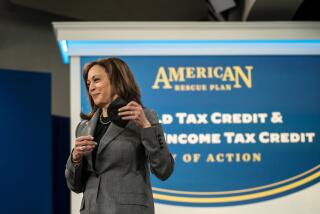A tax system that targets workers

- Share via
Imagine a society with two tax systems. One taxes the wealth people have accumulated. The other taxes the labor people perform. This society seems to be getting along well enough, raising enough tax revenue to finance the public goods and services that voters have told lawmakers they want to see supported.
Now imagine that lawmakers have decided to cut the tax rates on wealth and raise them on labor. At the same time, the amount of wealth subject to the lower tax rates is rising as income from labor is shrinking.
That society, we would agree, is asking for trouble. In real life, would any society choose to take such an unsustainable course? One already has — the United States since 1980.
In America today, virtually all the taxes that local, state and federal governments levy can be classified as either wealth-based or labor-based.
The wealth-based taxes include the state and local property taxes we pay on an annual basis and the one-time taxes on large inheritances and estates. Wealth-based taxes also include taxes on the income people get from holding wealth — dividends and interest, for instance — and the capital gains income from buying and selling assets. Throw in the corporate income tax here, too.
Labor-based taxes obviously cover the levies paid on the income we earn from the work we do. These include personal income taxes and the payroll taxes that fund Social Security and Medicare.
These labor-based taxes also include the more difficult to categorize sales and sin taxes. The lion’s share of the revenue raised from these taxes, we would argue, comes from people spending their labor-based income on basic living expenses or, in the case of sin taxes, on cigarettes and alcohol.
What has happened to the rates in these two tax systems?
Over the last three decades, the rates for wealth-based taxes have been plummeting. In 2011, the effective corporate income tax rate dropped to a 40-year low of 12.1%. The top federal estate tax rate has sunk from 70% to 40% since 1981. Estate-tax avoidance strategies have brought the actual rate paid on large estates down to less than half that. Many states have abandoned the state inheritance tax altogether.
The tax rate on capital gains did recently increase at the federal level, but the long-term trend has been downward, and the rate of tax on dividends has fallen dramatically, from 70% in 1980 to 20% today. Finally, beginning with the passage of California’s Proposition 13 in 1978, average property tax rates nationwide have declined sharply.
Meanwhile, the rates for labor-based taxes, taken together, have increased. Average Americans do pay federal income taxes at a slightly lower rate than 30 years ago. But the effective payroll tax rate has increased sharply, as the ceiling on wages subject to Social Security taxes has risen and the ceiling on wages subject to Medicare taxes has been removed entirely.
On top of that, sales taxes have also increased steadily, as have sin taxes.
The two tax systems, however, don’t operate on a totally separate basis. The money that makes up the base in one system can migrate to the other. Over the last three decades or so, the available tax base from our labor-based tax system has been migrating to the wealth-based tax system.
Here’s how. Until around 1980, wages kept pace with gains in productivity. Since then, productivity has continued to increase while wages have stagnated. The result? The allocation of income between labor and wealth has shifted, with more dollars going toward higher corporate profits, dividends and capital gains than toward wages. Tax rates are shrinking for booming profits, while rising for shrinking wages.
But that’s not the worst of it. Tax rates in the wealth-based tax system aren’t just decreasing. An increasingly higher share of the dollars in that system escape taxation entirely.
This growing exempt pool of wealth includes pension plans, IRAs, 401(k) plans, life insurance and annuity policies, municipal bond portfolios and funds held offshore. Most of this wealth sits in the portfolios of the richest families. Over recent decades, this tax-exempt chunk of American wealth has grown faster than our aggregate wealth — about $20 trillion, not including what may be as much as $10 trillion in wealth parked in offshore tax havens.
In the estate tax arena, it’s the same dynamic. The exemption from estate tax has swelled. In 1981, the first $175,625 of the estate an affluent American left behind faced no estate tax. Today, the first $5,250,000 is exempt. And with the help of a decent estate planner, that exemption can be leveraged into a much higher number.
To sum up: The overall rate for wealth-based taxes has been decreasing while the overall rate for labor-based taxes has been increasing. At the same time, the potential base for labor-based taxes is migrating to the wealth-based tax side. And an ever-increasing portion of that potential base for wealth-based taxes faces no tax at all.
This is unsustainable.
Bob Lord practices tax law in Phoenix. Sam Pizzigati edits Too Much, the Institute for Policy Studies’ weekly publication on excess and inequality. TooMuchOnline.org
More to Read
A cure for the common opinion
Get thought-provoking perspectives with our weekly newsletter.
You may occasionally receive promotional content from the Los Angeles Times.










